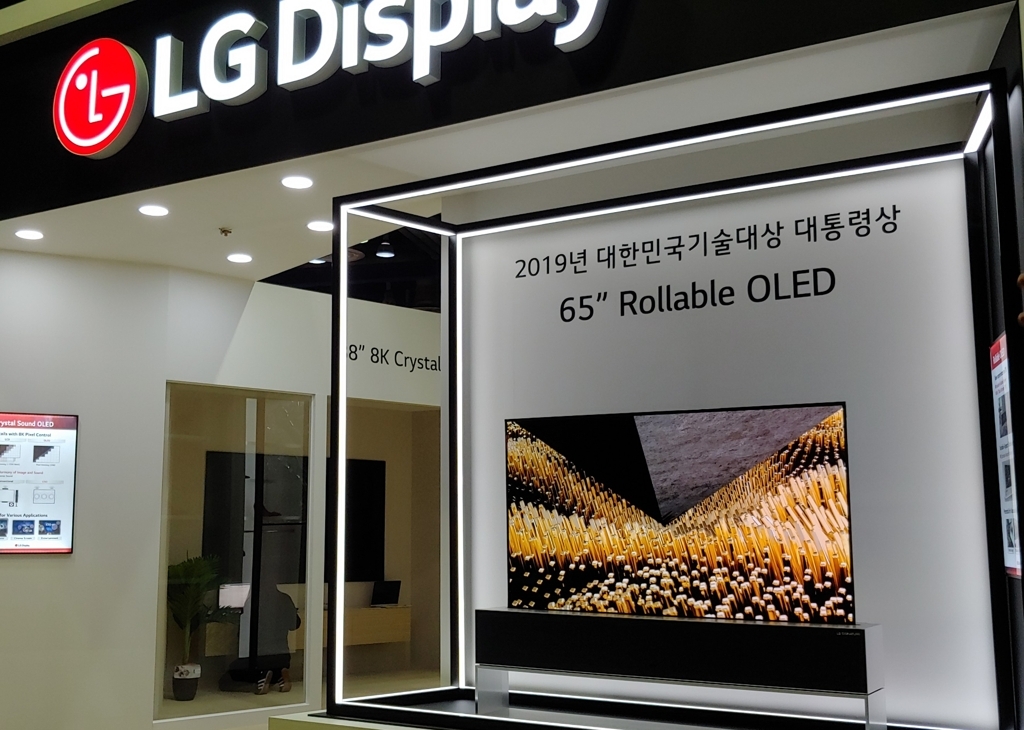South Korea's display panel makers are expected to see improved earnings next year, with liquid crystal display panel prices likely to rebound and the companies' organic light-emitting diode display production capacity set to expand, analysts here said Monday.
South Korea's two major display makers -- LG Display Co. and Samsung Display Co. -- have been struggling to make a profit this year due to falling LCD panel prices stemming from sluggish demand and a supply glut.
LG Display posted an operating loss of 937 billion won ($799 million) in the first three quarters of the year, while Samsung Display's operating profit declined 17 percent on-year to 1.36 trillion won over the same period.
 |
(Yonhap) |
LG Display's losses were especially pronounced since roughly 80 percent of the company's sales come from its LCD business.
But analysts said LG and Samsung's LCD businesses may recover this year since LCD panel prices are likely to rebound in the first quarter of next year. They said that TV manufacturers are trying to adjust their inventory levels and major display makers are planning to cut supplies to push up prices.
"LCD TV panel prices are likely to rebound starting with 32-inch, 55-inch and 65-inch products," Kim Dong-won, an analyst at KB Securities Co., said in a report. "The price of LCD panels in 2020 is expected to be 15 to 20 percent higher than the current level."
Market watchers said what is really promising is that South Korean display producers are shifting to OLEDs amid a saturated LCD market and rising demand for OLED-equipped products.
"China now has the power to control the LCD industry," said Soh Hyun-chul, a researcher at Shinhan Investment Corp. "For South Korea, OLED is not a matter of choice, but a matter of survival."
Both Samsung and LG have been focusing on upgrading their OLED production capabilities through massive investment.
Samsung Display is expected to set up productions lines for small and medium-sized flexible OLED and large quantum dot (QD)-OLED displays next year at its new "A5 plant" in Asan, south of Seoul.
In October, Samsung announced it will invest 13 trillion won in QD display production -- 10 trillion won in facilities and 3 trillion won in research and development.
For 2020, analysts predicted that Samsung would largely benefit from increased demand for 5G smartphones.
"Demand for smartphone OLED panels is expected to grow 30.5 percent on-year to 620 million units next year, and Samsung Display's operating profit is projected to grow 42.3 percent on-year to 3.3 trillion won," Soh said.
LG Display will see the operation of its plant in Guangzhou, China, shift into full swing next year, with some analysts predicting that the company's OLED production capability could rise more than 70 percent.
In July, the company announced it will invest 3 trillion won in its OLED production line in South Korea to expand its premium panel production capacity.
Such enhanced productivity could swing LG Display to the black in 2020, with operating profit likely to begin in the third quarter of the year, according to Soh.
Large OLED display panels for TVs have been widely tapped to lead the company's growth in 2020. For the first nine months of this year, sales of LCD TVs only grew 0.2 percent on-year, but those of OLED TVs jumped 16.7 percent from a year earlier, according to industry data.
"It's expected that sales of OLED TVs from LG and Sony will grow more than 50 percent next year," Soh said. "The company is projected to make a turnaround next year with an operating profit of 605.7 billion won." (Yonhap)





![[Herald Interview] 'Trump will use tariffs as first line of defense for American manufacturing'](http://res.heraldm.com/phpwas/restmb_idxmake.php?idx=644&simg=/content/image/2024/11/26/20241126050017_0.jpg)


